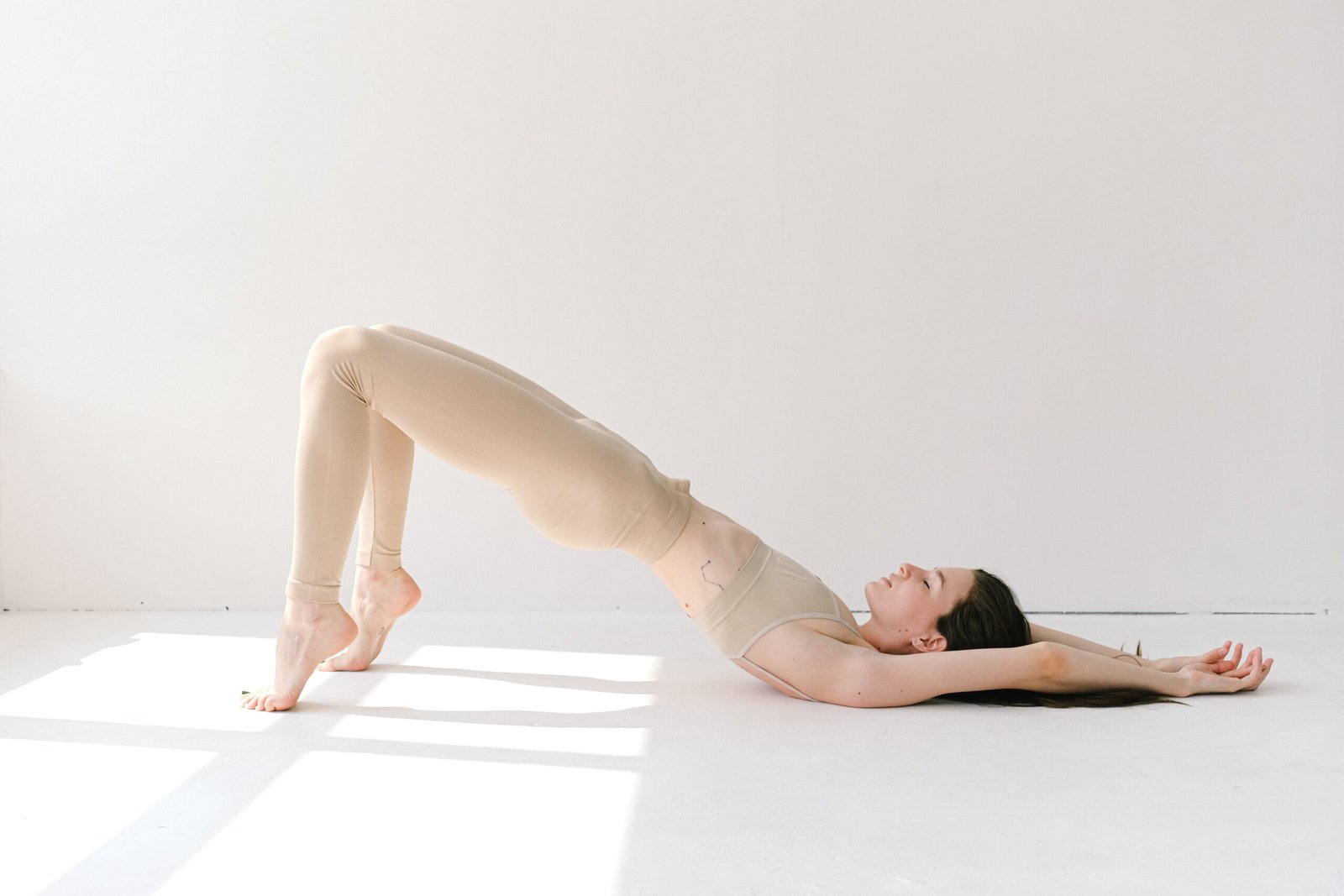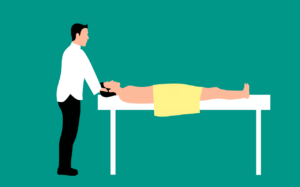
If you often wake up with a stiff or sore neck, adjusting your pillow height might just be the solution you need to prevent neck pain. Many people overlook the importance of finding the right pillow height, but it can make a world of difference in your comfort and overall well-being. By making a simple adjustment to your pillow, you can ensure proper alignment of your head and neck, relieving tension and promoting a restful night’s sleep. Say goodbye to those pesky neck aches and discover the benefits of finding your perfect pillow height.

Choosing the Right Pillow
When it comes to getting a good night’s sleep, finding the right pillow is crucial. The right pillow can provide the proper support and alignment for your neck, helping to prevent neck pain and discomfort. Here are some factors to consider when choosing the right pillow.
Consider Your Sleeping Position
Your sleeping position plays a significant role in determining the type of pillow that would be best for you. Different sleeping positions require different levels of support. For example, if you sleep on your back, you would need a pillow that keeps your head and neck aligned with your spine. If you are a side sleeper, a pillow that fills in the gap between your head and shoulder would be beneficial. Stomach sleepers, on the other hand, may require a flatter, thinner pillow to avoid straining the neck.
Evaluate Different Pillow Types
There are various pillow types available on the market, each with its unique characteristics and benefits. Memory foam pillows, for instance, mold to the shape of your head and neck, providing personalized support. Feather pillows offer a soft and luxurious feel, while down pillows are known for their lightweight and fluffy texture. It’s essential to try out different pillow types to determine which one suits your sleeping preferences and provides the right level of support.
Ensure Proper Pillow Size
Pillow size is another crucial factor to consider. The size of the pillow should correspond to the size of your body frame and the dimensions of your bed. A pillow that is too small may not provide adequate support, while a pillow that is too large can strain your neck and shoulders. Aim for a pillow that allows your head and neck to rest comfortably without causing any unnatural bending or twisting.
Assessing Optimal Pillow Height
Optimal pillow height is essential for maintaining proper spinal alignment and preventing neck pain. Here are some factors to consider when determining the ideal pillow height for you.
Keep Your Spine Aligned
One of the primary considerations for pillow height is to ensure that your spine remains aligned while you sleep. When lying on your back, the pillow should support the natural curve of your neck and keep your head in line with your spine. Similarly, for side sleeping, the pillow should be high enough to keep your head aligned with your spine and prevent it from tilting downward or upward.
Examine the Angle of Your Neck
The angle at which your neck rests while sleeping is another important factor in determining the ideal pillow height. You want to maintain a neutral position, avoiding excessive flexion or extension of the neck. The pillow should be high enough to support your neck while keeping it in line with the rest of your spine.
Determine Neck Support
Different individuals may require varying degrees of neck support depending on their body shape and personal preferences. Some people find that a higher pillow provides better support for their neck, while others may prefer a lower pillow height. It’s essential to experiment with different pillow heights to find the level of neck support that feels most comfortable and aligns your spine properly.

Adjusting Pillow Height for Back Sleepers
Back sleepers have specific requirements when it comes to pillow height to maintain proper alignment and prevent neck pain.
Proper Alignment of the Head and Neck
For back sleepers, the pillow should be thick enough to support the natural curve of their neck without lifting their head too high. Ideally, the pillow height should fill in the gap between the back of the head and the mattress, providing comfortable support while keeping the head and neck in alignment with the spine.
Using Additional Support
In some cases, back sleepers may require additional support to keep their head and neck in the optimal position. This can be achieved by using a rolled towel or a small cushion placed under the neck while using a lower pillow to support the head. This additional support can help maintain the natural curvature of the neck and reduce strain.
Trying Different Pillow Layers
Back sleepers can also experiment with using multiple pillows of varying heights to find the optimal combination. By layering pillows, you can customize the height and firmness to suit your individual needs. For example, you might try placing a thinner pillow on top of a firmer one to create the perfect level of support and comfort.
Finding the Ideal Pillow Height for Side Sleepers
Side sleepers should pay close attention to pillow height to avoid strain on the neck and shoulders.
Maintaining Neutral Spine Alignment
To maintain neutral spine alignment while sleeping on your side, your pillow should be high enough to fill the space between your head and shoulder. This ensures that your head remains in line with your spine, preventing any strain or discomfort. The pillow should be of sufficient height to keep your neck supported without allowing it to bend or droop downward.
Using a Contoured Pillow
Side sleepers may find that a contoured pillow, specifically designed for this sleeping position, provides the best support. Contoured pillows are typically triangular in shape, with one side higher than the other, allowing your head to rest comfortably while keeping your neck properly aligned. The higher side of the pillow should be positioned under your neck, while the lower side supports your head.
Adding or Removing Pillow Loft
Each individual’s preference for pillow loft may vary, and side sleepers can adjust the height to suit their needs. Some prefer a higher loft, while others may find a lower loft more comfortable. Many pillows come with removable inserts or adjustable fill, allowing you to customize the height of the pillow by adding or removing fill material as needed.

Modifying Pillow Height for Stomach Sleepers
Stomach sleeping is known to put strain on the neck, but adjusting the pillow height can help minimize discomfort.
Encouraging Neutral Neck Position
For stomach sleepers, the key is to encourage a neutral neck position to reduce strain. This means using a thinner, flatter pillow that keeps your head in line with your spine and avoids excessive bending or rotation of the neck. A pillow that is too thick can lead to excessive arching of the neck and potential discomfort.
Utilizing a Thin Pillow
To maintain a neutral neck position, stomach sleepers should opt for a thin pillow or even consider using no pillow at all. A thin pillow helps prevent overextension of the neck and keeps the head closer to the mattress, promoting a more natural position for the spine. Experiment with different pillow thicknesses to find the right balance for your comfort.
Trying Without a Pillow
Some stomach sleepers find that sleeping without a pillow altogether is the most comfortable option. This is because it allows the neck to remain in a neutral position without any elevation. However, it is essential to ensure that your mattress provides adequate support to avoid any strain on your back or hips.
Using Bolsters or Rolled Towels
In addition to pillows, bolsters or rolled towels can be used to provide additional support and achieve the desired pillow height.
Placing Bolsters for Support
Bolsters, which are long, cylindrical pillows, can be strategically placed under different parts of the body to provide support and adjust the pillow height. For example, a bolster can be placed under the knees to alleviate pressure on the lower back or under the ankles to promote proper circulation. By using bolsters in combination with your regular pillow, you can find the most comfortable and supportive position for your head and neck.
Testing Rolled Towels for Height
Another option is to use rolled towels to modify the height of your pillow. Simply roll up a towel and place it under the pillow to increase the loft or remove it to decrease the height. This allows for more flexibility in finding the perfect pillow height to alleviate neck pain and improve your sleep quality.
Combine Pillows and Bolsters
By combining different pillows and bolsters, you can create a customized sleep surface that supports your entire body, from head to toe. Experiment with different arrangements and combinations until you find the ideal combination of pillows and bolsters that provides the perfect height and support for your neck and spine.
Understanding the Importance of Pillow Fill Materials
The fill material of a pillow is a crucial factor in determining its comfort, support, and durability. Here are some aspects to consider when choosing the right pillow fill material.
Exploring Different Pillow Fill Options
There are various types of pillow fill materials available, with each offering its unique characteristics. Memory foam, latex, down, feathers, and synthetic fibers are among the most common options. Memory foam molds to the shape of your head and neck, providing excellent support and pressure relief. Latex pillows are known for their durability and hypoallergenic properties. Down and feather pillows offer a luxurious and soft feel, while synthetic fibers provide an affordable and hypoallergenic alternative.
Considering Firmness and Adjustable Fill
Pillow firmness is another factor to consider. Some people prefer a soft, plush pillow, while others prefer a firmer and more supportive one. It’s essential to choose a fill material and firmness level that aligns with your personal preferences and provides adequate support for your neck and spine. Additionally, pillows with adjustable fill allow you to customize the firmness and loft, ensuring a comfortable and supportive sleep experience.
Identifying Suitable Fill for Your Neck Support
Different fill materials offer varying levels of support for the neck. Memory foam and latex pillows, for example, are known for their ability to conform to the contours of your neck, providing excellent support. Feather and down pillows may offer less support but are preferred for their softness. It’s essential to consider your neck support needs when selecting the fill material for your pillow.
Pillows for Specific Conditions
Certain neck conditions may require specialized pillows to alleviate symptoms and provide the necessary support. Here are some considerations for specific conditions.
Evaluating Pillows for Cervical Spondylosis
Cervical spondylosis, also known as arthritis of the neck, can cause pain, stiffness, and muscle weakness. Pillows that provide proper neck support and alignment can help alleviate these symptoms. Contoured cervical pillows or memory foam pillows with a curved design can be beneficial for individuals with cervical spondylosis, as they promote a neutral neck position and provide targeted support.
Choosing Pillows for Pinched Nerves
Pinched nerves in the neck can cause radiating pain, numbness, and tingling in the arms and hands. Choosing a pillow that supports the natural curvature of the neck and allows for proper spine alignment can help relieve the pressure on the affected nerve. Memory foam or contour pillows that cradle the neck and distribute weight evenly can be particularly helpful for individuals with pinched nerves.
Finding Pillows for Degenerative Disc Disease
Degenerative disc disease can lead to neck pain and stiffness as the discs in the spine degenerate over time. Pillows that provide adequate support and encourage proper spine alignment can help alleviate these symptoms. Cervical pillows with a curved design or memory foam pillows that contour to the neck’s shape can provide the necessary support and relieve pressure on the degenerated discs.
Additional Tips to Relieve Neck Pain
In addition to choosing the right pillow and adjusting its height, there are other steps you can take to relieve neck pain and improve your sleep quality.
Practice Good Sleep Hygiene
Maintaining good sleep hygiene is essential for overall sleep quality and neck health. This includes establishing a regular sleep schedule, creating a comfortable sleep environment, avoiding electronic devices before bed, and practicing relaxation techniques to help you unwind and prepare for sleep.
Engage in Regular Neck Exercises
Strengthening and stretching exercises for the neck muscles can help alleviate neck pain and improve flexibility. Consult with a healthcare professional or physical therapist to learn exercises that are safe and effective for your specific needs.
Use Heat or Cold Therapy
Applying heat or cold therapy to your neck can provide relief from pain and inflammation. Heat therapy, such as using a heating pad or taking a warm shower, can help relax tense muscles. Cold therapy, such as applying an ice pack or a cold compress, can reduce inflammation and numb the area. Alternate between heat and cold therapy to find what works best for you.
When to Seek Professional Help
In some cases, neck pain may persist or be accompanied by other symptoms that indicate an underlying condition. If you experience any of the following, it is important to seek professional help:
Persistent or Severe Neck Pain
If your neck pain persists for more than a few days or is severe and debilitating, it is advisable to consult with a healthcare professional. They can evaluate your symptoms, conduct further examinations if needed, and provide appropriate treatment options.
Accompanying Symptoms
Neck pain accompanied by symptoms such as numbness, tingling, weakness, or radiating pain in the arms or hands may indicate nerve compression or other underlying issues. Seeking medical attention is crucial to diagnose and address any potential conditions.
Potential Underlying Conditions
If you have a pre-existing medical condition or have recently experienced an injury to the neck, it is essential to consult with a healthcare professional. They can provide guidance on managing your condition and offer recommendations for pillows and other interventions that can help alleviate neck pain.







